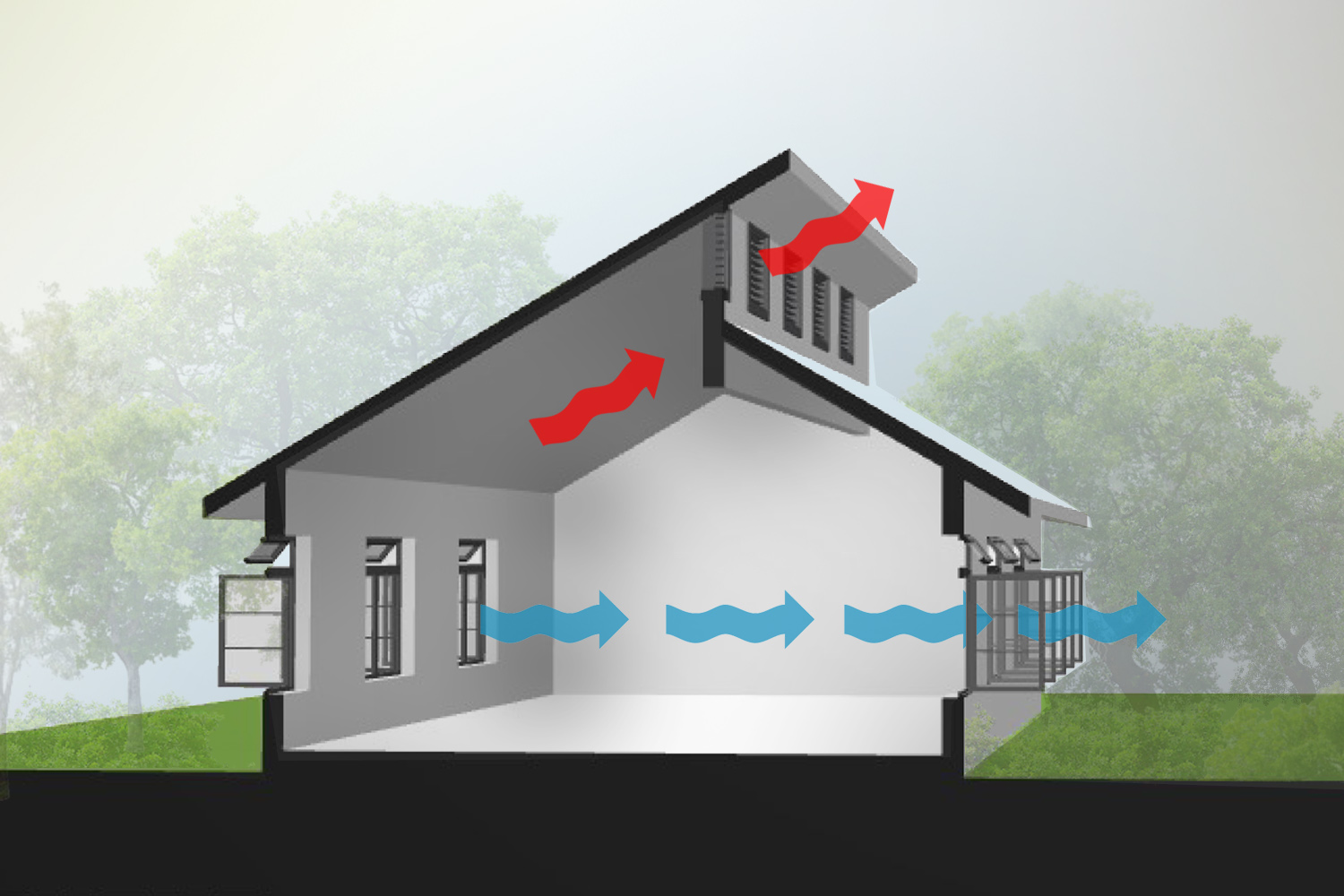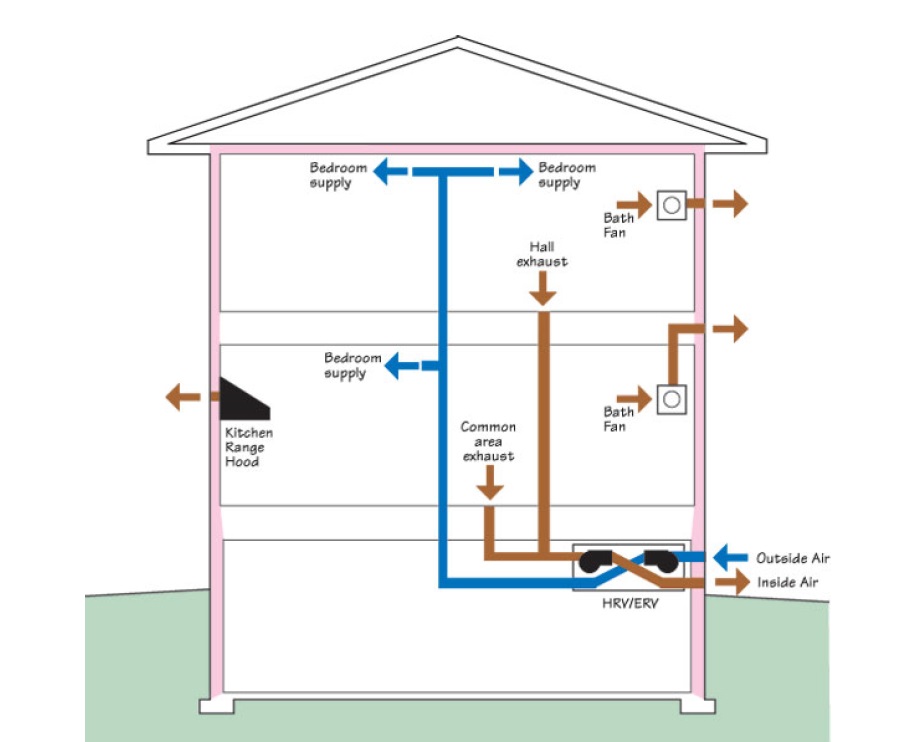Why Home Ventilation Melbourne Matters for a Healthier Living Environment
Wiki Article
Recognizing the Importance of Home Air Flow for a Healthier Living Setting
Home air flow plays an important role in keeping a healthy and balanced living setting. It assists in the exchange of exterior and indoor air, which is essential for improving air high quality. Without appropriate air flow, homes can become reproducing grounds for contaminants and allergens. The repercussions of poor air blood circulation can be considerable. This raises the inquiry of exactly how house owners can successfully apply air flow strategies to guard their health and well-being. Comprehending these methods is crucial.
The Basics of Home Ventilation
Home ventilation serves as an important component of indoor air top quality and convenience. It involves the process of exchanging stale indoor air with fresh outdoor air, therefore lowering moisture and controlling temperature level. Appropriate ventilation systems can consist of all-natural techniques, such as open windows and vents, in addition to mechanical systems, such as exhaust followers and air exchangers. Reliable home air flow assists prevent issues like interior mold and mildew growth and the buildup of hazardous bits. It also boosts general power efficiency, as well-ventilated spaces can preserve comfy temperature levels with less dependence on home heating and cooling down systems. Recognizing the essentials of home ventilation is essential for house owners looking for to create a healthier living setting for themselves and their family members.
Typical Sources of Indoor Air Pollution

Numerous might not realize it, interior air contamination can stem from numerous sources within a house. Common factors consist of unstable natural compounds (VOCs) sent out from paints, solvents, and cleansing products. Household home appliances, such as gas cooktops and fire places, can release dangerous gases like carbon monoxide gas and nitrogen dioxide. Additionally, mold and mildew thrive in wet areas, launching spores that impact air quality. Family pet dander, dust termites, and plant pollen can accumulate indoors, additional worsening air pollution degrees. Cigarette smoking indoors produces hazardous chemicals that stick around in the air. Developing materials, consisting of asbestos and formaldehyde, can off-gas hazardous substances. Acknowledging these sources is crucial for keeping a much healthier indoor setting and advertising efficient air flow techniques.
Health And Wellness Effects of Poor Air Flow
Interior air contamination can have substantial wellness effects, particularly when air flow is inadequate. Poor air flow can lead to the build-up of dangerous contaminants, such as volatile organic substances, mold and mildew, and particle matter. This buildup might cause respiratory issues, consisting of asthma, allergic reactions, and persistent obstructive pulmonary illness. Individuals may experience symptoms like migraines, exhaustion, and irritability of the eyes, nose, and throat. Vulnerable populaces, such as children and the senior, are at higher threat for extreme wellness impacts. Lasting exposure to badly aerated settings can likewise contribute to much more significant conditions, consisting of heart diseases. Making sure appropriate air flow is crucial for preserving a healthy and balanced living setting and lowering the threat of health and wellness complications associated with interior air contamination.Reliable Ventilation Techniques for Your Home
Proper air flow is essential for keeping a healthy and balanced interior atmosphere, and applying reliable strategies can greatly enhance air high quality. House owners can begin by ensuring that exhaust followers are set up in bathrooms and kitchen areas to eliminate excess dampness and smells. Opening up windows on a regular basis allows fresh air to circulate, particularly throughout moderate weather. Additionally, utilizing air cleansers with HEPA filters can help catch air-borne pollutants. For homes with heating and cooling systems, keeping a/c systems and transforming filters regularly is vital for peak efficiency. Incorporating all-natural air flow strategies, such as cross-ventilation, can also enhance airflow. Sealing any type of leakages in home windows and doors prevents unwanted drafts, which can disrupt controlled air flow, inevitably leading to improved interior air quality and comfort.Preserving Optimal Air Quality Year-Round
To keep optimal air quality year-round, homeowners must take on an aggressive method to handling their indoor environment. Routinely keeping an eye on indoor air high quality is critical; this consists of checking for pollutants such as dust, mold and mildew, and unpredictable click here to find out more organic compounds (VOCs) Implementing efficient ventilation systems, such as exhaust fans and air cleansers, can substantially reduce airborne pollutants. Additionally, regular upkeep of a/c systems assurances peak efficiency and air blood circulation. Property owners need to additionally take into consideration moisture degrees, as too much wetness can result in mold development. Seasonal adjustments may require modifications in ventilation strategies to fit varying outside air quality. By prioritizing these practices, homeowners can develop a much healthier living area, advertising general wellness for all occupants throughout the year.Regularly Asked Concerns
Just How Can I Inform if My Home Requirements Much Better Air Flow?
To establish if a home calls for far better air flow, one should observe indicators such as consistent moisture, mold and mildew development, mildewy smells, condensation on home windows, or increased allergy symptoms, showing poor air flow and possibly bad indoor air high quality.What Are the Indications of Poor Indoor Air Quality?

Can Houseplants Improve Indoor Air Quality Successfully?
The efficiency of houseplants in enhancing indoor air top quality is questioned. While some research studies recommend they can absorb toxins and produce oxygen, their total influence might be minimal compared to appropriate ventilation and air filtration systems.published here
Just how Usually Should I Adjustment My Air Filters?
The frequency of air filter changes commonly depends upon usage and filter type. Typically, it is suggested to replace filters every 3 months, though households with allergic reactions or pet dogs may require more regular changes for perfect performance.Are There Any Type Of Specific Air Flow Equipments for Allergy Sufferers?
Numerous ventilation systems, such as HEPA-filtered units, properly minimize allergens airborne. Home Ventilation Melbourne. These systems catch dust, pollen, and pet dog dander, giving allergy patients with a cleaner, much healthier indoor environment while taking care of air high quality efficiently
It assists in the exchange of interior and outside air, which is vital for boosting air top quality. Home ventilation serves as a vital component of interior air top quality and comfort. It entails the process of exchanging stagnant interior air with fresh outdoor discover here air, therefore reducing humidity and regulating temperature level. Indoor air pollution can have substantial health and wellness implications, especially when ventilation is inadequate. Appropriate air flow is necessary for keeping a healthy and balanced indoor setting, and carrying out reliable strategies can significantly improve air quality.
Report this wiki page